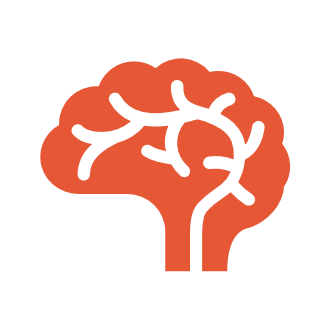Burnout Update: New MBI Manual Available Now
Posted on 4 September 2017
Author: Issa Coultas

We at Mind Garden are proud to release the new Maslach Burnout Inventory™ (MBI) Manual Fourth Edition. The fourth edition of the manual includes updated research on the MBI, new FAQs, and new forms for medical personnel and university students. The manual features the following new sections:
 | Burnout and the Brain: A study using a combination of psychological measurements and MRI scans in 110 participants found that burnout can actually alter neural circuits in the brain. Also, individuals who have high burnout may have a corresponding change in brain anatomy that relates to the amygdala. Read our blog post to learn more about this article. |
 | Burnout and Health: Survey research has identified a strong and consistent relationship between Emotional Exhaustion and self-reports of a range of somatic symptoms, such as headaches and sleep disturbances. |
 | Burnout’s Consequences for Other People: A National Academy of Medicine discussion paper tackles how burnout can threaten safe, high-quality care for patients. Click here to access the paper. |
 | Preventing and Alleviating Burnout and Its Negative Consequences: This section reviews studies on the possibility of and how to alleviate burnout when it does occur. |
 | Burnout Profiles as a New Approach to Using MBI Scale Scores: A new study considers the different profiles of MBI scale scores as a comparison tool. For example, comparing people who score high on all three MBI scales with those who are low on all three MBI scales, or high on one MBI scale but low on the other two scales. Initial research findings suggest that people with different MBI profiles have different workplace experiences. |
The newly updated Frequently Asked Questions can be found on the Mind Garden website: MBI FAQs.
We are especially excited to introduce two new MBI forms to help serve the healthcare industry and students in higher education. The new forms - the MBI for Medical Personnel and the MBI for Students - are geared specifically for these populations. Read on for more information about the MBI for Medical Personnel and the MBI for Students.
![]()
Burnout is on the rise in healthcare professionals: Why we need the new MBI for Medical Personnel.
Medical personnel are experiencing a rapidly changing work context due to new technology and increased market pressure. Changes to organizations and care delivery models impact the way care is delivered and how care is experienced by patients. It is not surprising that burnout is high in healthcare settings1, with physician burnout rising dangerously2.
Burnout among medical personnel has received more attention recently due to media stories highlighting the risk it threatens to patients3. A 2016 study on patient safety found strong evidence that patient safety is negatively correlated with burnout4. Beyond such medical consequences, the resulting litigation costs healthcare organizations billions of dollars annually5.
Medical personnel mental health is another consequence of burnout that has received attention by healthcare community. The National Academy of Medicine recently released a perspective that discussed the responsibility state medical boards have to act in order to protect the mental health of medical personnel against burnout6.
As the leading measure of burnout, the MBI specifically addresses the needs of the medical community. The new MBI for Medical Personnel form is a variation of the MBI Human Services Survey (MBI-HSS) and refers to “patients” instead of “recipients.” This wording is often preferred in medical settings. In addition, the new fourth edition of the MBI Manual features psychometric properties, research, and administration specifically tailored to the medical personnel community. Click here to learn more about the MBI-HSS (MP).
The MBI for Medical Personnel is also available as a combined form with the Areas of Worklife Survey (AWS). The combined AWS+MBI is a powerful tool for assessing the workplace context and what attributes might be driving burnout (e.g., workload, control, reward, etc). Click here to learn more about the combined AWS+MBI form.
![]()
You asked and we delivered. The MBI for Students is now available!
After so many requests for a MBI version targeting students, Mind Garden is happy to deliver the new MBI for Students, MBI-GS (S). The new MBI for Students is an adaptation of the MBI General Survey and uses wording to address college and university students’ view of their studies and their reactions to their academic work. The MBI for Students is available for use but its psychometric properties are not yet documented. Click here to learn more about the MBI-GS (S).
Footnotes:
1 Shanafelt, T. D., Boone, S., Tan, L., Dyrbye, L. N., Sotile, W, Satele, D., West C. P., Sloan, J., Oreskovich, M. R. (2012). Burnout and satisfaction with work-life balance among US physicians relative to the general US population. JAMA Internal Medicine, 172, 377–85.
Dyrbye, L. N., Massie, F. S., Eacker, A., Harper, W., Power, D., & Durning, S. J. (2010). Relationship between burnout and professional conduct and attitudes among US medical students. JAMA, 304, 1173–1180.
Soler, J. K., Yaman, H., Esteva, M., Dobbs, F., Asenova, R. S., Katic, M., et al. (2008). Burnout in European family doctors: The EGPRN study. Family Practice, 25, 245–265.
Sharma A., Sharp, D. M., Walker, L. G., & Monson, J. R. (2008). Stress and burnout in colorectal and vascular surgical consultants working in the UK National Health Service. Psycho-Oncology, 17, 570–576.
2 Shanafelt, T. D., Hasan, O., Dyrbye, L. N., Sinsky, C., Satele, D., Sloan, J. A., & West, C. P. (2015). Changes in burnout and satisfaction with work-life balance in physicians and the general US working population between 2011 and 2014. Mayo Clinic Proceedings, 90(12), 1600-1613.
4 Hall, L. H., Johnson, J., Watt, I., Tsipa, A., O’Connor, D. B. (2016). Healthcare staff well-being, burnout, and patient safety: A systematic review. PLoS ONE | DOI:10.1371/journal.pone.0159015
5 Avery T., Barber N., Ghaleb M., Franklin, B.D., Armstrong, S., Crowe, S., et al. (2012). Investigating the prevalence and causes of prescribing errors in general practice. London: The General Medical Council: PRACtICe Study.
Health Do. (2000). An organisation with a memory: Report of an expert group on learning from adverse events in the NHS chaired by the Chief Medical Officer. The Stationery Office London.
6 https://nam.edu/breaking-a-culture-of-silence-the-role-of-state-medical-boards/

 SEARCH
SEARCH LOGIN
LOGIN  BLOG
BLOG
 CART
CART

